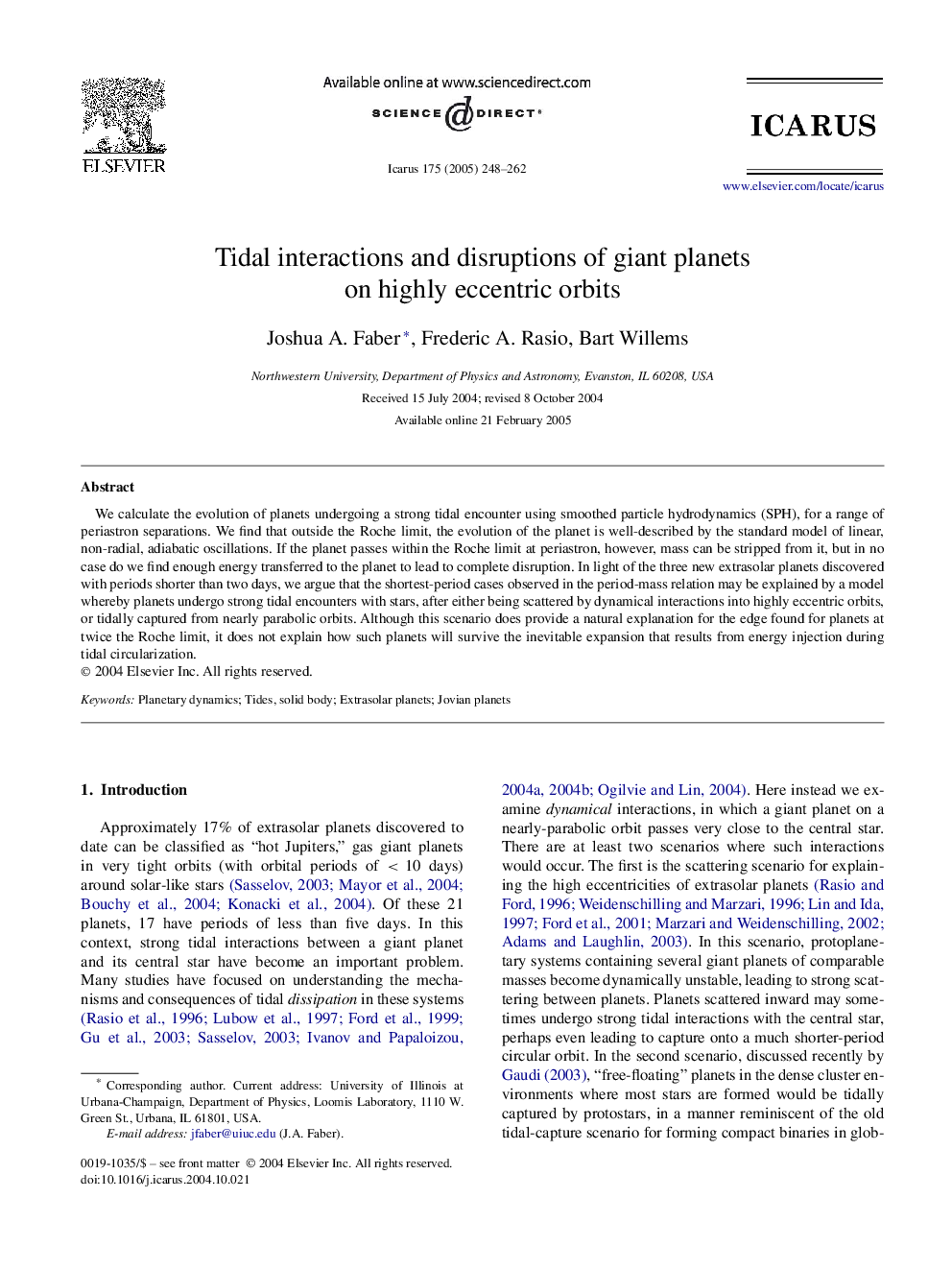| Article ID | Journal | Published Year | Pages | File Type |
|---|---|---|---|---|
| 10702108 | Icarus | 2005 | 15 Pages |
Abstract
We calculate the evolution of planets undergoing a strong tidal encounter using smoothed particle hydrodynamics (SPH), for a range of periastron separations. We find that outside the Roche limit, the evolution of the planet is well-described by the standard model of linear, non-radial, adiabatic oscillations. If the planet passes within the Roche limit at periastron, however, mass can be stripped from it, but in no case do we find enough energy transferred to the planet to lead to complete disruption. In light of the three new extrasolar planets discovered with periods shorter than two days, we argue that the shortest-period cases observed in the period-mass relation may be explained by a model whereby planets undergo strong tidal encounters with stars, after either being scattered by dynamical interactions into highly eccentric orbits, or tidally captured from nearly parabolic orbits. Although this scenario does provide a natural explanation for the edge found for planets at twice the Roche limit, it does not explain how such planets will survive the inevitable expansion that results from energy injection during tidal circularization.
Related Topics
Physical Sciences and Engineering
Earth and Planetary Sciences
Space and Planetary Science
Authors
Joshua A. Faber, Frederic A. Rasio, Bart Willems,
